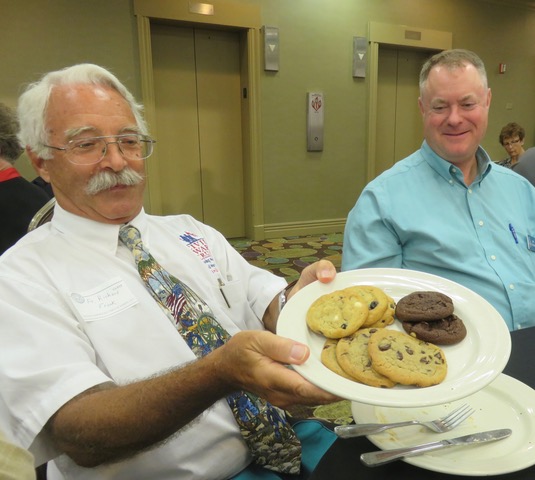
At our dinner meeting on August 28th, Dr. Leo E. Oliva gave a very interesting presentation about action along the Santa Fe Trail during the Civil War. A summary of the program is as follows:
- The Santa Fe Trail opened in 1821 and was pioneered by William Becknell. The trail connected Independence MO with Santa Fe NM. Trade along the trail grew until the War with Mexico in 1846. The U.S. Army used the trail route for an invasion of New Mexico.
- There were no problems with Native Americans along the trail until the War with Mexico when traffic increased.
- In March of 1862, Texas troops under General Henry Hopkins Sibley left El Paso TX and invaded New Mexico. They were hoping to reach the gold fields of California and capture a large quantity of supplies at Fort Union NM. The Confederacy was also hoping to establish a port on the west coast and add territory where slavery could expand. If they could capture the southwest, it might lead to foreign recognition of the Confederacy.
- On March 11, 1862, the Confederate troops captured Santa Fe and the capital fled to Las Vegas NM. The U.S. then asked Colorado to raise troops to defend New Mexico.
- On March 28, 1862 the Battle of Glorieta Pass was fought. This battle, known as the "Gettysburg of the West" was fought near Santa Fe NM and was the decisive battle of the New Mexico campaign. Although the Confederates were able to push the Union force back through the pass, they had to retreat back to Santa Fe when their supply train was destroyed and most of their horses and mules killed or driven off. The Union captured and burned 70 Confederate wagons loaded with food, medical supplies, blankets, etc.
- Prior to the Civil War, treaties were signed with the Indians to allow trade along the Santa Fe Trail. The Indians got annuities, but they still raided wagon trains. When the Civil War came, the problem got worse.
- Liquor trade with the Indians was a big problem due to an absence of mounted troops. Whiskey was most commonly traded with the Indians.
- On November 29, 1864 the Sand Creek Massacre occurred. U.S. Volunteer Cavalry under the command of Colonel John Chivington slaughtered about 250 Indians. Sand Creek was a major problem for the U.S. The location has been designated the Sand Creek Massacre National Historic Site and is administered by the National Park Service.
- The Treaty of the Little Arkansas was signed in October of 1865. The U.S. tried to make peace with the Indians. The final stages of the Indian Wars were started during the Civil War.
- For more information, Dr. Oliva recommended: The Santa Fe Trail - A Guide. This book can be purchased from the website, The Last Chance Store.
Here are some addtional photos from the August 2018 meeting ...

Cookies for dessert apprciatd by Father Richard Frank and John Kussman

Arnold Schofield and Don Bates during the book auction

Our speaker, Dr. Leo E. Oliva
|
| |